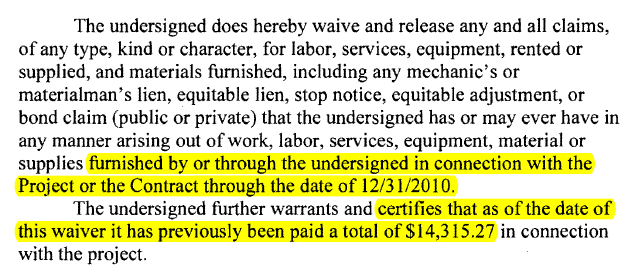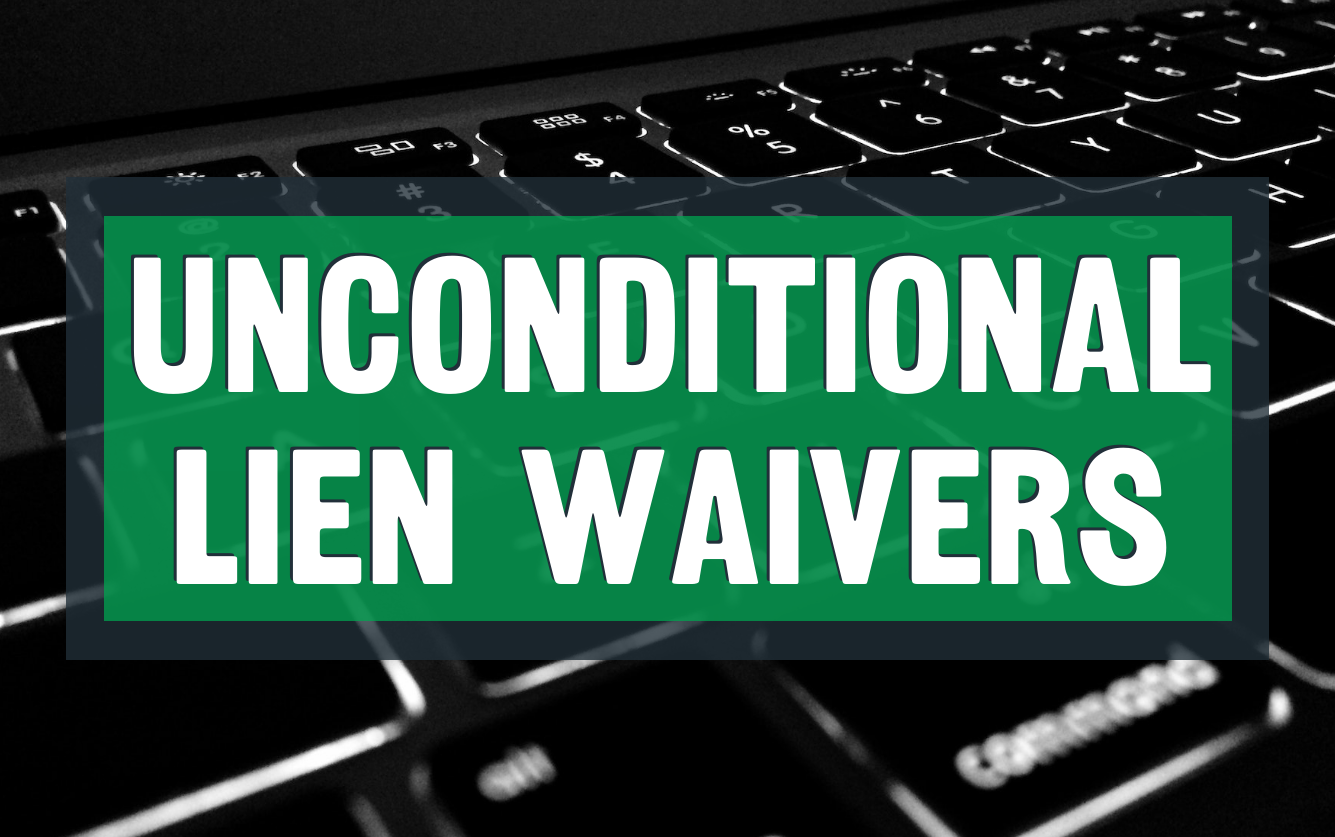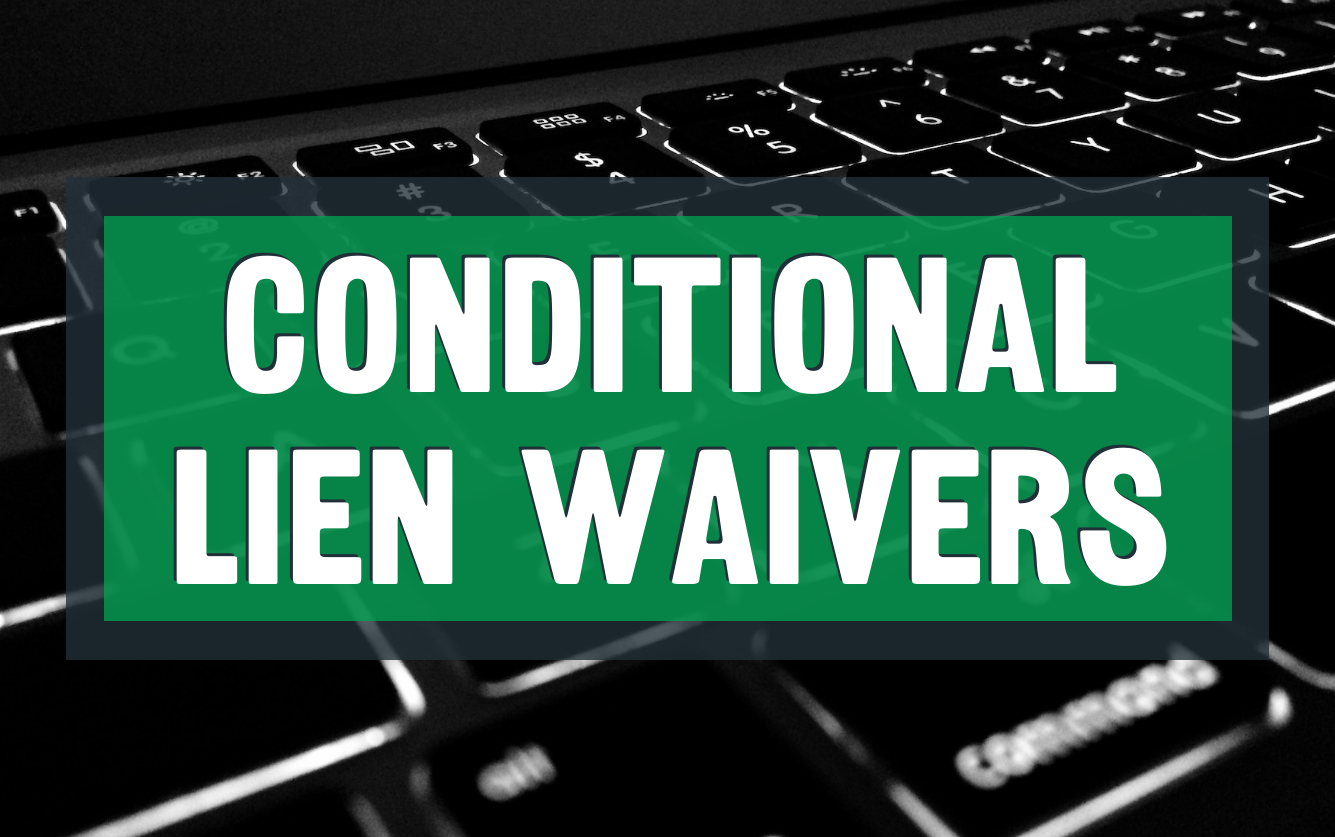
Aside from a mouthful when trying to say it three times fast, the Notice of Termination of Notice of Commencement is a recorded affidavit that terminates/extinguishes an existing Notice of Commencement. (For the sake of ease, in this article I will refer to the Notice of Termination as “NOT” and the Notice of Commencement as “NOC”.)
First Things First: What is a NOC?
What is a NOC? The NOC is an affidavit, generally recorded in the county where the project is located, containing project information and informing lien claimants of obligations necessary to preserve lien rights.
What Information is Included in a NOT?
The information in the NOT should be the same as the information in the NOC. This information should include the recording information for the NOC and the effective date of the termination plus:
- Property description
- Name & address of property owner
- Name & address of the prime contractor
- Name & address for the designee or contract manager
- Name & address for surety, lender or other interested parties
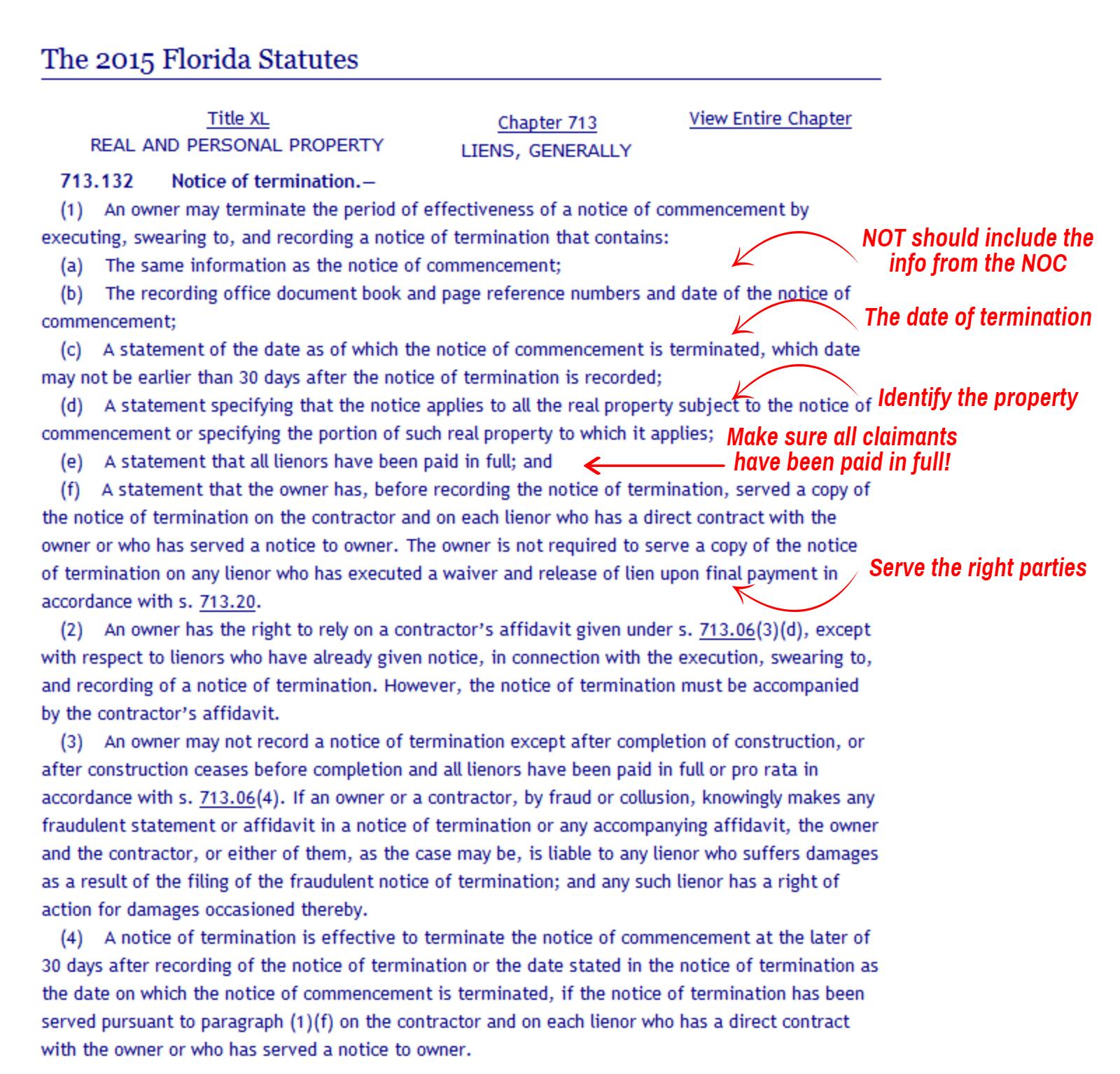
This is a copy of a blank NOT from Miami Dade County in FL . In this case, Miami Dade County requests a copy of the NOC be included as an exhibit, so the actual info in the NOT is not as detailed as the list laid out above:
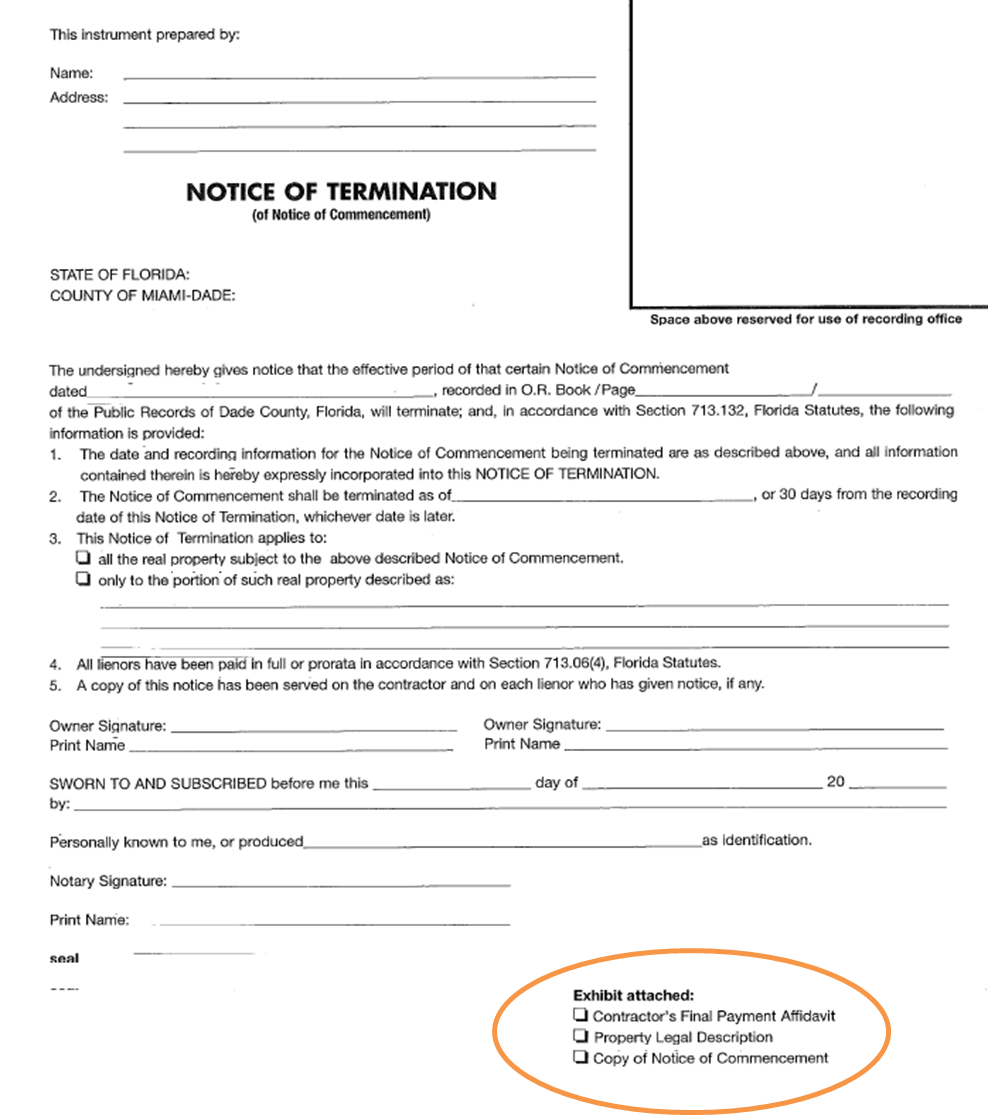
What Would Trigger the Filing of a NOT?
One of the more popular reasons to file a NOT would be upon completion of a project where all payments to claimants have been made. A few additional reasons a NOT may be filed:
- If the owner has re-financed the project and lender has changed so a new NOC will be issued
- If construction has ceased prior to completion
- If the GC changes and a new NOC has to be filed
This isn’t an exhaustive list, but the commonality is either a. the project is complete & parties have been paid or b. something has changed on the project & the NOC needs to be amended to reflect that change.
If a NOT is Filed, Changing Information on the NOC, Should I Serve an Amended Preliminary Notice?
As a best practice, if information for the contractual chain or project changes, you should serve an amended notice, regardless of which state the project is located. There are states that require an amended notice be served, but even in states where statute doesn’t specifically tell you to serve an amended notice, you should, simply as a matter of due diligence. It’s important that all parties know you are furnishing to the project & that you expect to be paid in a timely fashion. Please note, this is simply a best practice and you should seek legal counsel for review of your specific situation.
Is the NOT Only Applicable in Florida?
Short answer: no. There are states like Nebraska, with statute specific to… get ready for it… The Notice of Termination of Notice of Commencement. (See Neb. Rev. Stat. Ann. § 52-146 – Termination of notice of commencement; procedure.)
Interested in learning more about The Notice of Termination of Notice of Commencement? Contact us today!



